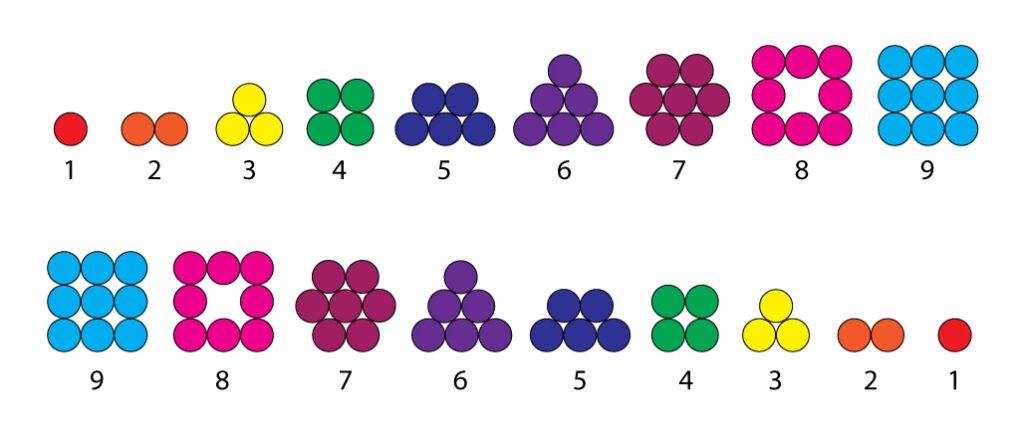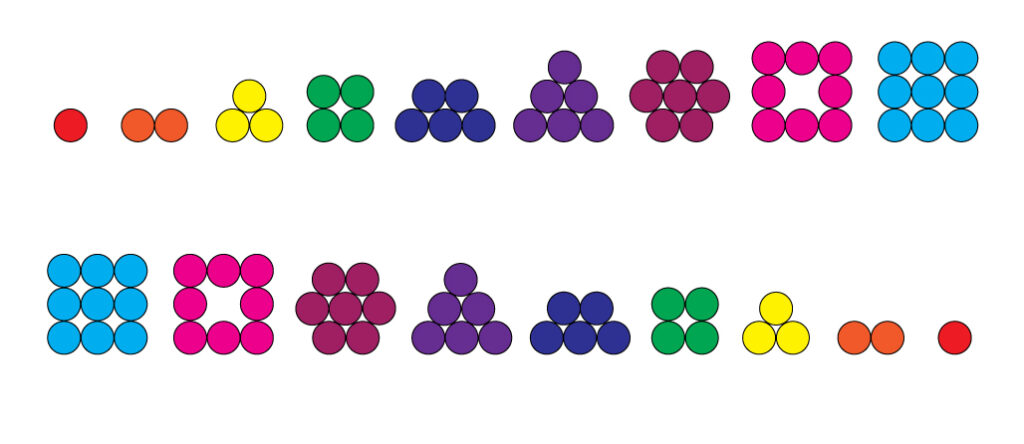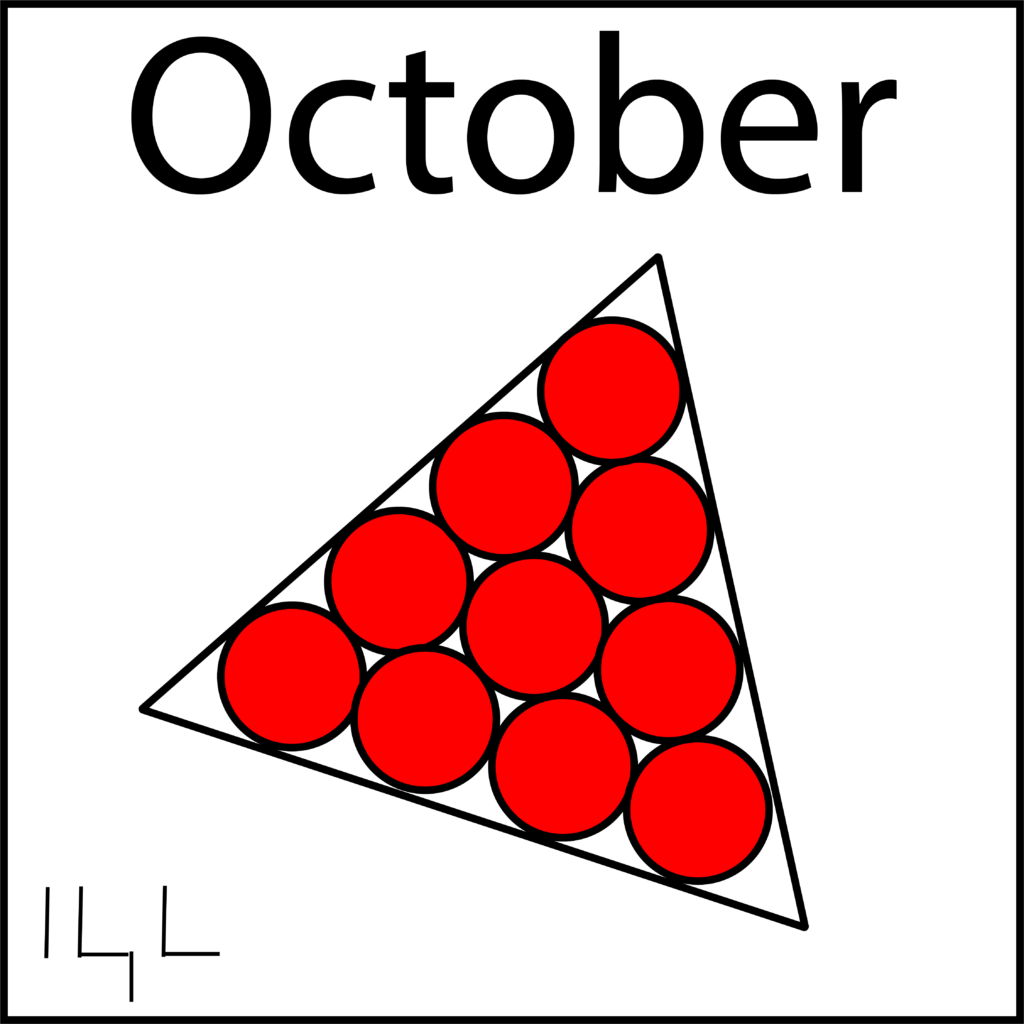Unlocking Math with 3D Shapes and Colors: Learning to Count 1-9
The Power of 3D Shapes and Colors
Each number from 1 to 9 is represented by a distinct 3D shape and a corresponding color. This pairing makes numbers easier to identify and remember. For example, the number 1 might be represented by a red sphere, while 3 might be a blue pyramid. By turning numbers into tangible objects, children can visualize and interact with math in a completely new way.

The First Step: Learning the Sequence Forward and Backward
The first goal in this system is for the student to master the sequence of numbers from 1 to 9, both forwards and backwards. This is done by recognizing the 3D shapes and their associated colors, allowing the child to develop a solid foundation in counting.

Here’s how the process works:
Moving to the Next Level:
When the student can fluently identify and count the shapes both forward and backward, they are ready to move on to more advanced math concepts. This milestone demonstrates their ability to recognize the numbers as more than just symbols—they now understand them as unique shapes and colors that can be applied in various ways.
Identifying Numbers 1 to 9 (Forward):
The student begins by identifying each shape and color in order, starting with 1 and progressing through to 9. This step helps the child become familiar with the appearance of each shape and the order of numbers. Repetition is key, as it helps reinforce both the visual and numerical patterns.
Counting Backward from 9 to 1:
Once the child can confidently count forward, the next challenge is counting backward from 9 to 1. This task encourages deeper understanding, as it requires the student to recall the sequence in reverse, solidifying their grasp of the number system.
Why This Method Works
Foundational Mastery: Learning the sequence forwards and backwards ensures that children fully understand the basics before moving on to more advanced math topics. This mastery builds confidence and prepares them for the next level.
Visual Engagement: Associating numbers with 3D shapes and colors helps children stay focused and engaged. The visual cues make it easier for them to recall the information and understand the relationships between numbers.
Tactile Learning: Using shapes makes numbers feel more real, and when students interact with the shapes, it taps into their ability to understand math in a hands-on way. This is especially beneficial for visual and kinesthetic learners.
What’s Next?
After mastering the forward and backward sequences, students will begin applying their knowledge of shapes and colors to solve math problems. This foundation will lead to understanding addition, subtraction, and even advanced math tricks that allow for faster problem solving using logic and shapes.
At ColorMyMath, we’re dedicated to making math a joyful and exciting journey. By starting with 3D shapes and colors, we help children develop a deep, lasting understanding of numbers that will serve them for years to come.
How useful was this post?
Click on a star to rate it!
Average rating 0 / 5. Vote count: 0
No votes so far! Be the first to rate this post.

One Response
How cool is this system, it has helped my children greatly!